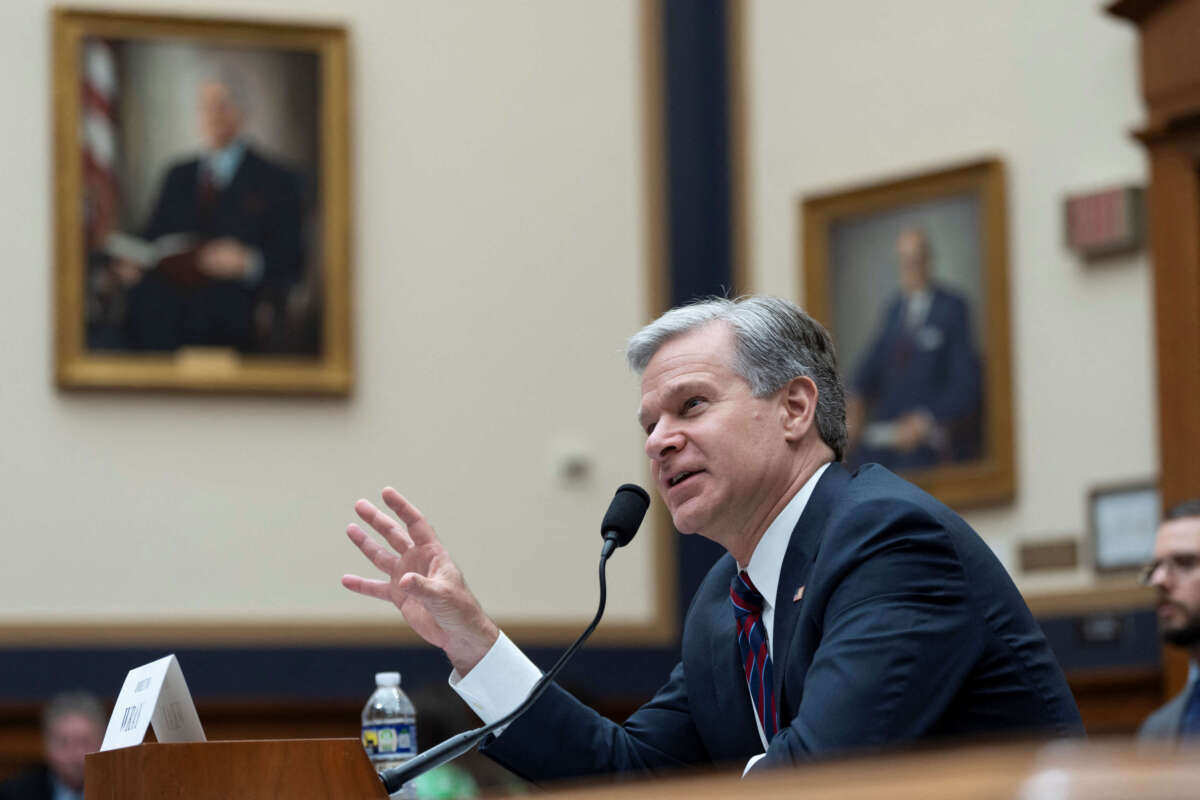Close to two weeks after former President Donald Trump survived an attempt on his life by a shooter at a campaign rally in Butler, Pennsylvania, questions still abound regarding the details of his injury.
Although Trump has stated that a bullet from the shooter hit his ear, FBI director Christopher Wray told the House Oversight Committee on Wednesday that those details haven’t yet been confirmed — that shrapnel, and not the bullet itself, could have led to Trump’s injuries.
“My understanding is that either it [a bullet] or some shrapnel is what grazed his ear,” Wray told the committee. He was unable to state definitively whether Trump had been shot.
Wray added:
There is some question about whether or not it was a bullet or shrapnel that hit his ear, so it is conceivable, as I sit here right now, I don’t know whether that bullet, in addition to causing the grazing, could have also landed somewhere else.
Remarkably, Rep. Jim Jordan (R-Ohio), chair of the Oversight Committee, didn’t have any follow-up questions regarding the question of a bullet or shrapnel.
It might not matter much, in the grand scheme of things, whether Trump was hit by a bullet or shrapnel — whatever caused his injuries, an attempt on his life did occur. However, Trump has played up the incident in speeches since it happened, claiming that he was only saved “by the grace of almighty God” — a blatant attempt to appeal to the Christian nationalist sentiment that runs rampant among his far right base.
The matter could likely be cleared up if Trump submitted his medical records to the FBI. However, Trump has not made any of his records available, much less offered them to the public, in spite of other presidents (such as Ronald Reagan) giving regular updates about their health after their lives had been put at risk.
Indeed, on the days after the shooting, President Joe Biden received a COVID-19 diagnosis. On nearly every day since that diagnosis was made, the White House gave updates on his status.
The only statement released regarding Trump’s health in the days since the shooting was from Rep. Ronny Jackson (R-Texas), who served as Trump’s White House doctor when he was president. Jackson claimed that he was worried about Trump and traveled to see him after the shooting so he could “personally check on him.”
“Former President Trump is doing well, and he is recovering as expected from the gunshot wound,” Jackson said.
But his statement was not an official medical assessment, and didn’t include details about Trump’s injuries or how he was recovering from them.
Trump has a history of trying to keep details of his health hidden, including by exaggerating or flat-out lying about his supposed wellbeing.
In 2015, for example, in the run-up to his first serious presidential run, Trump’s physician, Harold Bornstein, an internal medicine and gastroenterology specialist, wrote in a note shared with the media that Trump “has had no significant medical problems” and that, “if elected, Mr. Trump, I can state unequivocally, will be the healthiest individual ever elected to the presidency.”
The wording of that statement was rightly questioned, and years later Bornstein, who is now deceased, admitted that he hadn’t actually written the note.
“[Trump] dictated that whole letter. I didn’t write that letter. I just made it up as I went along,” Bornstein said.
Jackson, too, has released dubious health assessments about Trump while he was his White House physician — including once stating that he believed Trump “might live to be 200 years old” if he had a healthier diet.
Angry, shocked, overwhelmed? Take action: Support independent media.
We’ve borne witness to a chaotic first few months in Trump’s presidency.
Over the last months, each executive order has delivered shock and bewilderment — a core part of a strategy to make the right-wing turn feel inevitable and overwhelming. But, as organizer Sandra Avalos implored us to remember in Truthout last November, “Together, we are more powerful than Trump.”
Indeed, the Trump administration is pushing through executive orders, but — as we’ve reported at Truthout — many are in legal limbo and face court challenges from unions and civil rights groups. Efforts to quash anti-racist teaching and DEI programs are stalled by education faculty, staff, and students refusing to comply. And communities across the country are coming together to raise the alarm on ICE raids, inform neighbors of their civil rights, and protect each other in moving shows of solidarity.
It will be a long fight ahead. And as nonprofit movement media, Truthout plans to be there documenting and uplifting resistance.
As we undertake this life-sustaining work, we appeal for your support. Please, if you find value in what we do, join our community of sustainers by making a monthly or one-time gift.
